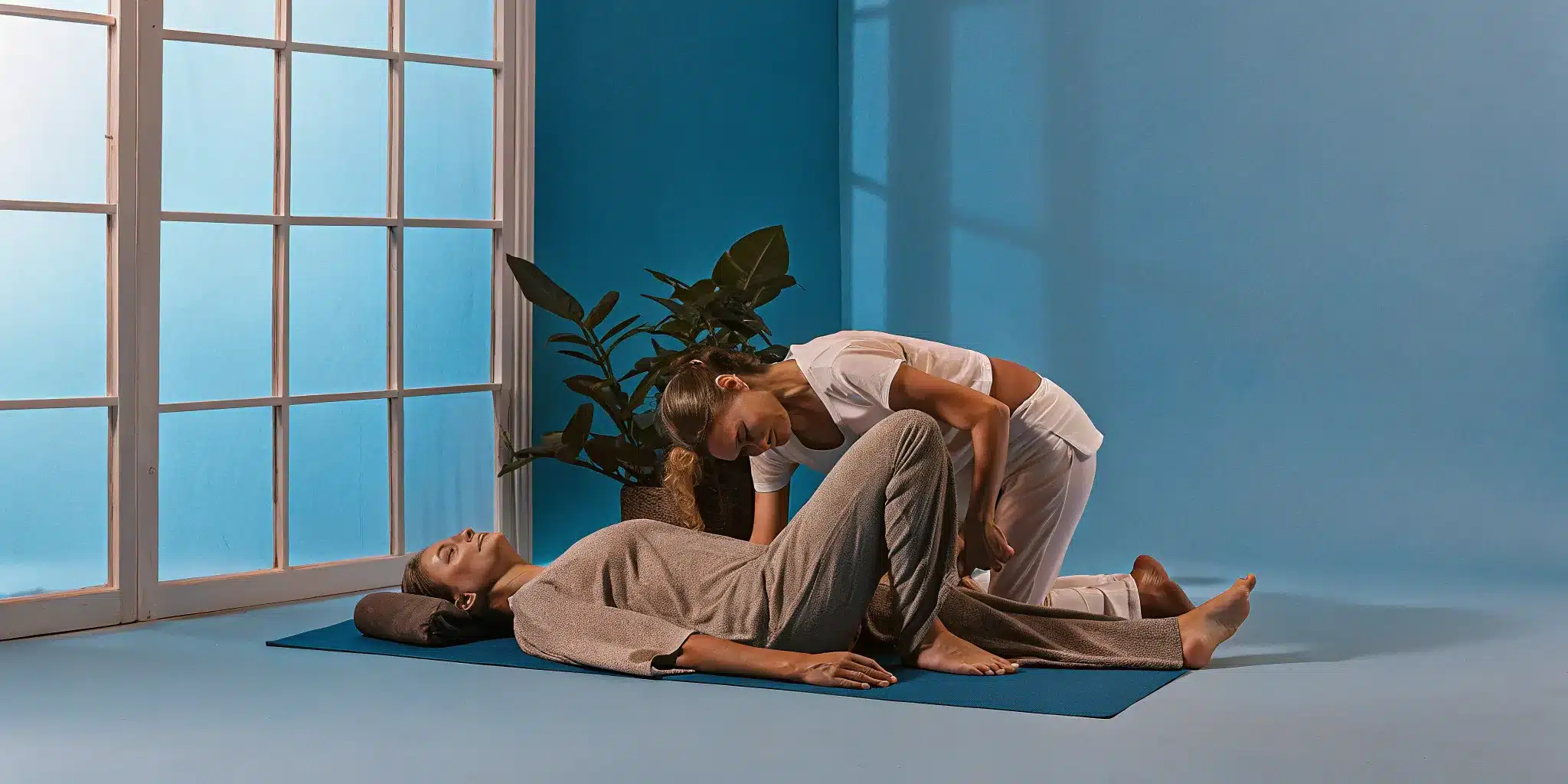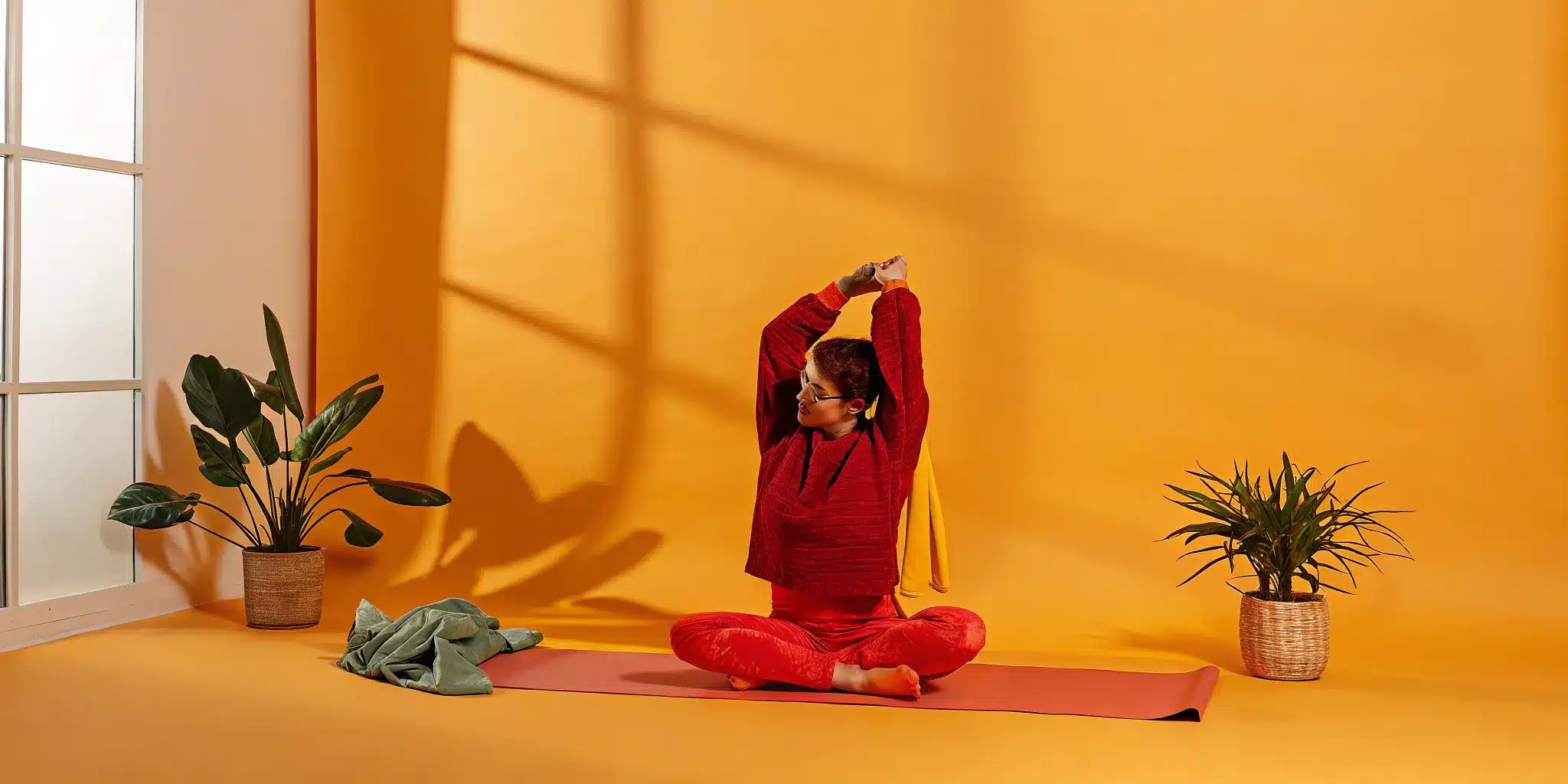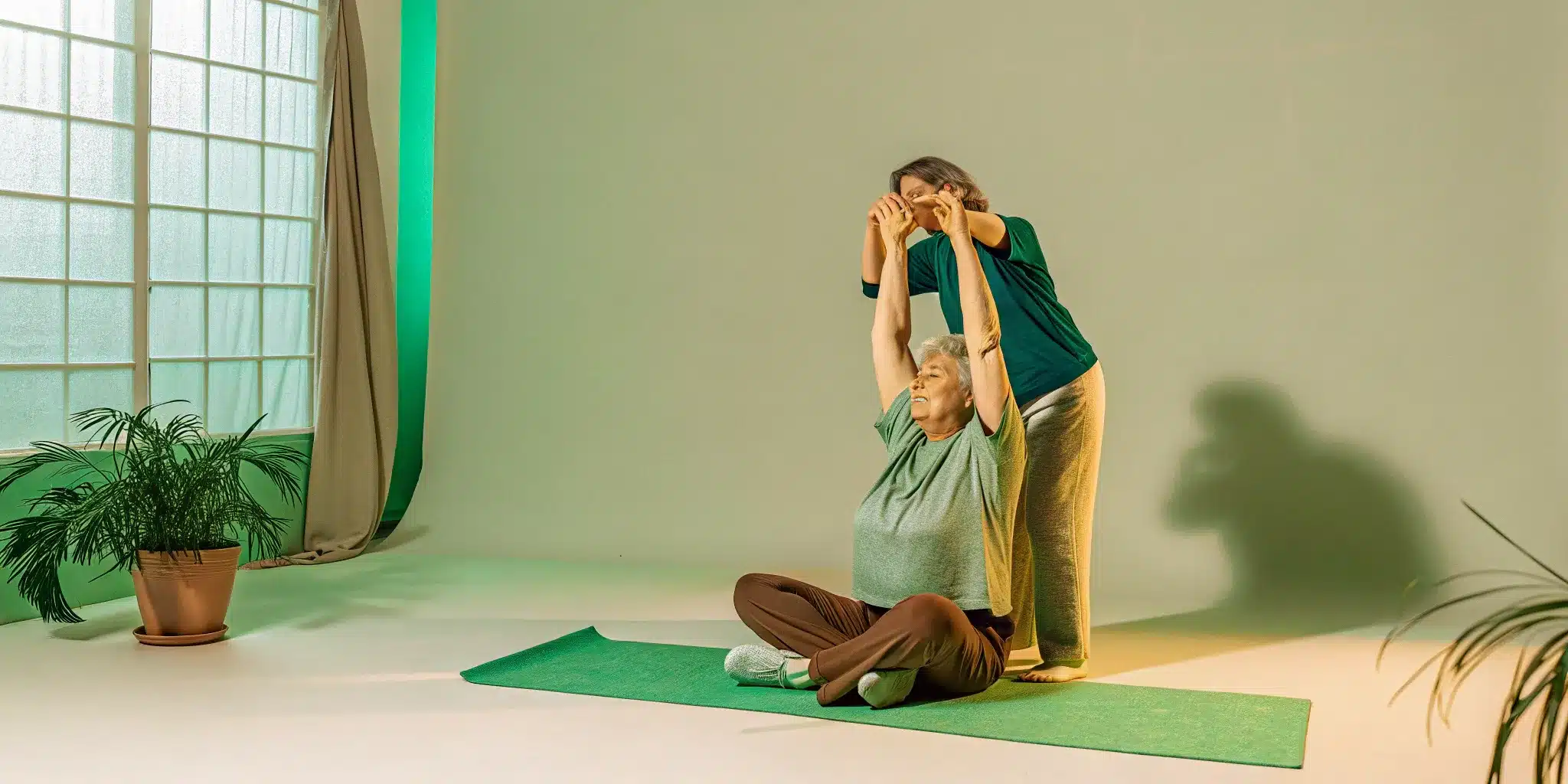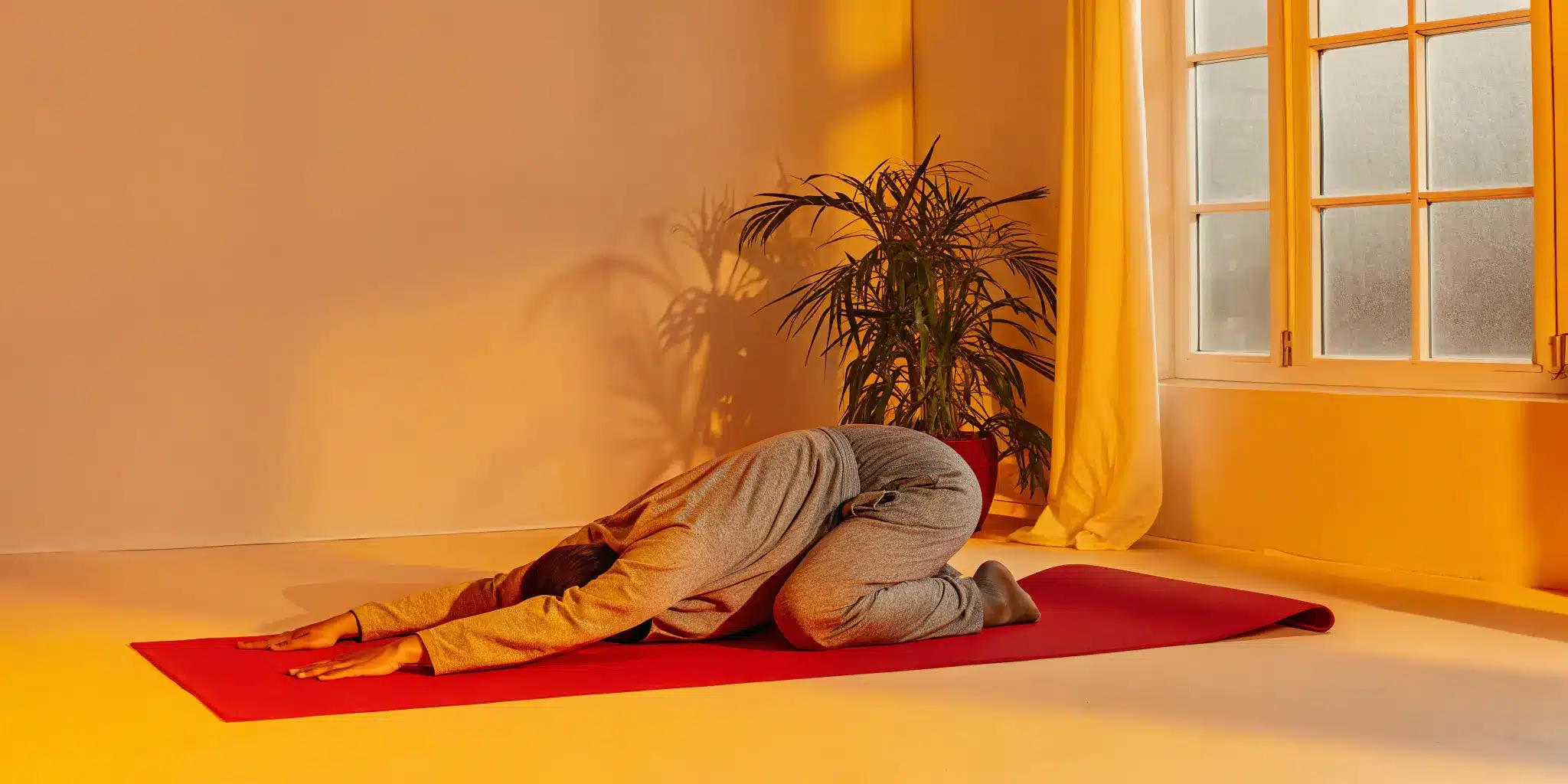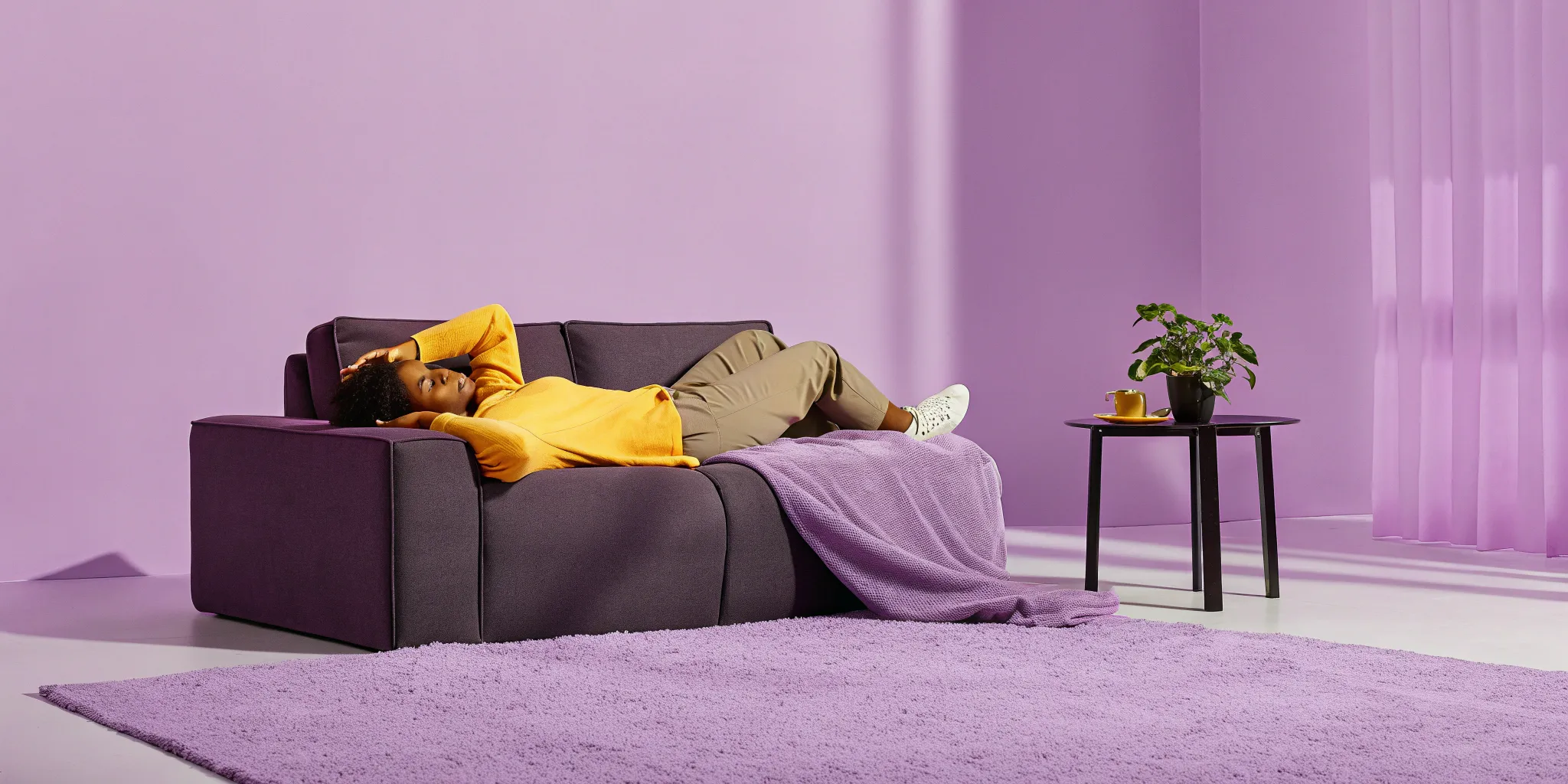That persistent ache in your lower back or the nagging pain in your hip might be sending you a clear signal: your alignment is off. When one hip sits higher than the other, it creates a chain reaction of compensation throughout your body, leading to chronic discomfort and poor posture. While it sounds complicated, the solution is often surprisingly simple. It’s about bringing your body back into balance by releasing overly tight muscles and strengthening weaker ones. We’ve put together a comprehensive guide with the best stretches for uneven hips to help you address the root cause of your pain and build a foundation for long-term, pain-free movement.
Key Takeaways
- Address the Root Cause—Your Muscles: Nagging hip and back pain often stems from muscle imbalances, where tight muscles on one side pull your pelvis out of place. A targeted stretching and strengthening routine is the most effective way to correct this.
- Create Stability with a Balanced Routine: Lasting relief comes from a two-part approach. Focus on gently stretching tight muscles like your hip flexors and lower back, while also building strength in your core and glutes to hold your pelvis in its proper position.
- Support Your Progress Beyond the Stretches: Your daily habits can either help or hinder your alignment. Make small adjustments to how you sit, stand, and sleep to reinforce the work you do in your stretching routine and prevent misalignment from returning.
What Causes Uneven Hips?
Feel like one side of your body is working harder than the other? Maybe one pant leg always seems longer, or you notice a slight lean in your reflection. This could be a sign of uneven hips, where one hip sits higher than the other. This common imbalance is often the sneaky culprit behind nagging back pain and stiffness. Understanding what’s causing your hips to be uneven is the first step toward finding relief. Fortunately, many of the root causes are related to muscle imbalances that you can work on.
Common Reasons for Hip Misalignment
Several factors can throw your hips out of alignment. One common cause is scoliosis, a condition where the spine has a sideways curve that can pull on the pelvis and cause it to tilt. Another reason is a difference in leg length. This can be a structural issue, where one leg is physically longer, or a functional one. A functional discrepancy means your legs are the same length, but muscle imbalances from habits like slouching or always standing with your weight on one leg make them seem uneven. These postural habits cause muscles on one side to become tight while the other side weakens.
How to Tell if Your Hips Are Uneven
You don’t need special equipment to get a sense of your hip alignment. A quick mirror check can be very revealing. Stand in front of a full-length mirror with your feet hip-width apart and your shoes off. Place the heels of your hands on the bony points at the front of your hips. Now, look in the mirror. Are your hands level, or is one noticeably higher? If you see a slant, you might have a pelvic tilt. You may also notice other clues, like your waistband sitting crookedly or one shoulder appearing higher than the other.
How Misalignment Affects Your Daily Life
Uneven hips aren’t just an aesthetic issue; they can have a ripple effect throughout your body. This imbalance can lead to chronic pain in your lower back, hips, groin, and even down your legs. It forces your body to compensate, which can result in poor posture and an uneven walking pattern. Over time, this can limit your range of motion, making simple activities feel like a chore. It also puts extra strain on certain joints and muscles, increasing your risk of injury during workouts or everyday movements. Addressing the misalignment is key to moving freely and without pain.
Stretches to Realign Your Hips
If you’re dealing with uneven hips, the right stretches can make a world of difference. The goal is to release tension in tight muscles and strengthen weaker ones to bring your pelvis back into a more neutral position. These movements are designed to be gentle yet effective, targeting the key areas that contribute to misalignment. Remember to listen to your body and move without pain. Consistency is key, so try to incorporate these stretches into your routine a few times a week to start seeing and feeling results.
Start with a Dynamic Warm-Up
Before you jump into deeper stretches, it’s important to warm up your muscles. A dynamic warm-up gets the blood flowing and prepares your body for movement, which helps prevent injury. Focus on the muscles around your hips, particularly the gluteus medius. This muscle, located on the side of your hip, is a powerhouse for pelvic stability and plays a huge role in keeping your hips level when you walk. Gentle movements like leg swings (forward-and-back and side-to-side), hip circles, and cat-cow poses are perfect for getting started. Spend about five minutes warming up before moving on to more targeted stretches.
Stretch Your Hip Flexors and QL
When one hip is higher than the other, it’s often because the muscles on that side are overly tight. A key culprit is the quadratus lumborum, or QL, a deep muscle that connects your lowest rib to the top of your pelvis. To stretch it, stand with your feet hip-width apart and reach one arm overhead, gently bending to the opposite side until you feel a stretch along your side body. You should also pay attention to your hip flexors. A simple kneeling lunge can help release tension here. These stretches specifically target the muscles that can pull your pelvis out of alignment, helping to restore balance.
Release Your Piriformis and IT Band
Deep within your glutes is a small muscle called the piriformis. When it gets tight, it can contribute to hip pain and imbalance. A great way to release it is with a figure-four stretch. Lie on your back with your knees bent and cross one ankle over the opposite thigh. Gently pull the uncrossed leg toward your chest until you feel a stretch in the glute of the crossed leg. Your IT band, a thick band of tissue running along the outside of your thigh, can also become tight and pull on your hip. A simple standing crossover stretch can help provide relief and improve your hip mobility.
Loosen Your Lower Back and Glutes
Tension in your lower back and glutes almost always goes hand-in-hand with hip issues. A gentle way to release both areas at once is with a variation of Child’s Pose. Start on your hands and knees, then sit back on your heels with your knees wide apart. From there, walk your hands over to one side until you feel a nice stretch along your opposite side body and lower back. Hold for 30 seconds, then switch sides. This pose not only loosens tight back muscles but also gently opens up your hips, providing relief and encouraging better alignment.
Strengthen Your Core for Stability
While stretching is crucial for releasing tightness, strengthening is the other half of the equation for long-term alignment. A strong core and stable glutes help hold your pelvis in the correct position. Exercises like clamshells are fantastic for targeting the gluteus medius, the muscle we talked about for pelvic stability. Side planks are another excellent choice for building core strength and endurance. By incorporating these strengthening exercises into your routine, you’re not just stretching for temporary relief—you’re building a strong foundation to keep your hips aligned for good.
Why Stretching Helps Realign Your Hips
When your hips feel off-kilter, it can seem like a complex problem with no clear solution. The good news is that targeted stretching can make a significant difference. By focusing on the right muscles, you can gently guide your pelvis back toward a more neutral position. Stretching isn’t just about gaining flexibility; it’s about restoring balance to your body’s foundation. When you release tension in overly tight muscles and allow weaker muscles to activate properly, you address the root cause of the misalignment. This process helps reduce pain, improve your posture, and allow you to move with greater ease and confidence.
Correcting Muscle Imbalances
Think of your pelvis as being held in place by a network of muscles. When some of these muscles are too tight and others are too weak, they pull your hips out of alignment. This is a classic case of muscle imbalance. For example, a tight quadratus lumborum (QL) muscle in your lower back can hike one hip up. Stretching these tight muscles while activating weaker ones, like your glutes, helps bring balance back to your pelvis and spine. It’s a targeted approach that encourages your body to find its natural, centered alignment again.
Improving Your Body’s Alignment
Misaligned hips create a ripple effect throughout your entire body. This imbalance can lead to pain in your lower back, groin, or hips, and it often contributes to poor posture. When your hips are out of place, your spine has to compensate, which can throw your shoulders and head out of alignment, too. Stretching helps correct this by loosening the tight muscles that are pulling your pelvis askew. This allows your hips to sit more evenly, providing a stable base for your spine and improving your body’s overall alignment.
Finding Relief from Aches and Pains
That nagging ache in your lower back or the sharp pain in your hip is often a direct symptom of misalignment. Your body is sending you a signal that something is out of balance. Exercises that stretch tight muscles and strengthen weak ones are incredibly helpful for finding relief. By consistently performing targeted stretches, you’re not just temporarily masking the pain—you’re addressing the underlying mechanical issue. Releasing tension in the hips, glutes, and lower back can significantly reduce discomfort and help you move freely again.
How Stretching Supports Other Muscles
Your hips are the central hub for movement, and their alignment affects everything from your knees to your shoulders. When your hips are properly aligned, your body can distribute forces more evenly during activities like walking, running, or even just standing. This reduces unnecessary strain on your joints and supporting muscles, which is key to preventing future injuries. Keeping your hips aligned is fundamental to your overall health, supporting good posture and setting you up for long-term, pain-free movement.
How to Stretch Safely and Effectively
Stretching to realign your hips isn’t just about going through the motions. To get real, lasting relief, how you stretch is just as important as the stretches you choose. Moving with intention and awareness is what separates a helpful stretch from one that could potentially cause more harm. It’s about creating a safe and effective practice that your body will thank you for.
Think of it as a conversation with your muscles. You need to listen to what they’re telling you and respond with gentle, consistent effort. This means focusing on your form, holding stretches for the right amount of time, using tools to support your body, and knowing which common mistakes to sidestep. By paying attention to these details, you can make sure every stretch brings you closer to better alignment and less pain, helping you build a routine that truly works.
Focus on Proper Form
Proper form is your foundation for a safe and effective stretch. Without it, you might be putting stress on the wrong areas or even making your misalignment worse. Before you even begin a stretch, take a moment to check your posture. Try to practice good posture by standing or sitting with a straight back, relaxed shoulders, and even hips. This alignment is key to targeting the right muscles. A stretch should feel like a gentle pull or release, never a sharp or shooting pain. If you feel pain, you’ve gone too far. Ease up until you find that sweet spot of a comfortable, productive stretch. Your body knows best, so make sure you’re listening.
How Long and How Often to Stretch
When it comes to stretching, timing is everything. Rushing through your routine won’t give your muscles the time they need to relax and lengthen. For most static stretches, the goal is to hold each one for about 15–30 seconds. This gives the muscle fibers a chance to release their tension. Repeat each stretch 2–3 times to get the full benefit. More important than the length of any single session, however, is consistency. A few minutes of stretching every day will do more for your hip alignment than one long session per week. Try to build it into your daily schedule, like in the morning to wake your body up or at night to release the day’s tension.
Use Props to Deepen Your Stretch
Don’t be afraid to ask for a little help from some props. They aren’t a sign of weakness; they’re smart tools that can help you get more out of every stretch, especially if you’re feeling tight. Simple items can make a huge difference in maintaining proper alignment and preventing strain. For example, you can use a yoga block to support your body during certain poses or place a rolled-up towel behind your back for support while sitting. A stretching strap (or even a belt or towel) can help you gently pull a limb closer without compromising your form. Props help you ease into a stretch safely, ensuring you’re targeting the right muscles without overextending yourself.
Avoid These Common Stretching Mistakes
To get the most out of your routine, it’s helpful to know what not to do. First, avoid bouncing in a stretch. This can actually cause your muscles to tighten up as a protective reflex, which is the opposite of what you want. Instead, ease into each stretch slowly and hold it steady. Another common mistake is holding your breath. Deep, steady breathing sends oxygen to your muscles and signals your nervous system to relax, allowing for a deeper release. Finally, be mindful of your daily movements outside of your stretching routine. Pay attention to how you stand, walk, and sit. Constantly leaning on one side can counteract all your hard work, so try to distribute your weight evenly.
Create Your Hip Alignment Routine
Now that you have the stretches, it’s time to put them into practice. Building a routine is the best way to turn these movements into a habit that supports your long-term hip health. Think of it less as a workout and more as a daily moment of self-care. The goal is to create a simple, repeatable plan that fits into your life. It doesn’t need to be complicated—in fact, the simpler, the better. A consistent routine is your most powerful tool for finding lasting relief and restoring balance to your body. By dedicating just a few minutes each day, you’re making a real investment in your mobility and overall well-being.
Start Gently and Increase Intensity
When you’re dealing with pain and misalignment, the last thing you want to do is push your body too hard, too soon. Begin by treating these stretches as gentle movements. Your focus should be on how your body feels, not on how deep you can go. If you feel any sharp pain, ease up. The idea is to coax your muscles into relaxing, not force them. As you become more comfortable and your flexibility improves, you can gradually hold the stretches a little longer or sink a bit deeper. This gentle approach helps you correct misaligned hips safely and effectively, preventing further strain or injury.
Combine Stretches for the Best Results
A well-rounded routine is key to addressing uneven hips. Misalignment is rarely caused by a single tight muscle; it’s usually a combination of muscles that are too tight and others that are too weak. That’s why your routine should include a variety of stretches that target different areas. Focus on lengthening tight spots like your hip flexors and quadratus lumborum (QL), while also incorporating exercises to strengthen weaker muscles in your glutes and core. This balanced approach ensures you’re not just stretching but also building the support system your pelvis needs to stay in alignment.
Track Your Progress
It can be hard to notice small changes day-to-day, so finding a way to track your progress is a great motivator. One simple method is the “mirror test.” Stand in front of a mirror at the beginning of your journey and notice the position of your hips. Are you leaning to one side? Does one hip sit higher than the other? Check in with yourself every week or two. Seeing those subtle shifts toward better alignment can be incredibly encouraging. You can also simply pay attention to how you feel. Maybe you notice less pain when you walk or find it easier to stand up from a chair. These are all signs you’re on the right track.
Stay Consistent for Lasting Change
Consistency is truly the secret ingredient for realigning your hips. Stretching for 10 minutes every day will give you better results than doing a full hour once a week. Your body adapts to what you do regularly. By consistently practicing your routine, you’re teaching your muscles to hold a new, more balanced position. It’s important to be patient with yourself, as it can take anywhere from a few weeks to several months to see significant changes. Remember that you’re undoing patterns that may have developed over years. Stick with it, and your dedication will pay off.
Support Your Hip Health Every Day
Stretching is a powerful tool for realigning your hips, but the work doesn’t stop when you roll up your mat. The small choices you make all day long have a huge impact on your body’s alignment. By becoming more mindful of your daily habits—from how you sit to how you sleep—you can support the progress you make with your stretching routine. These simple adjustments help reduce strain on your hips, prevent misalignment from recurring, and keep you moving freely. Here are a few key areas where you can make a difference.
Improve Your Posture
Think of your posture as the foundation for your body’s alignment. When you slouch, you put uneven pressure on your spine and hips, which can pull them out of place. The key is to practice good posture consistently. Aim to keep your back straight, your shoulders relaxed, and your weight distributed evenly on both feet. This simple awareness helps alleviate unnecessary strain on your hip joints. If you work at a desk, adjust your chair so your feet are flat on the floor and your hips are level with your knees.
Adjust Your Sleeping Position
You spend about a third of your life sleeping, so your position in bed can significantly affect your hip alignment. If you often wake up with a sore back or stiff hips, your sleeping posture might be the cause. To give your hips the support they need, try sleeping on your back with a pillow under your knees. If you’re a side sleeper, place a pillow between your knees. This simple trick prevents your top hip from dropping forward and twisting your pelvis, keeping your hips stacked and aligned while you rest.
Modify Your Daily Movements
Everyday actions like walking or lifting groceries can contribute to hip misalignment if you’re not careful. Start paying attention to your habits. Do you tend to lean on one hip while standing? Do you always carry your bag on the same shoulder? These seemingly small habits create muscle imbalances over time. Try to distribute weight evenly when you stand and switch which side you carry heavy items on. Being mindful of your daily body mechanics can prevent you from undoing all the hard work you put into your stretching routine.
Simple Lifestyle Changes for Better Hips
Beyond specific movements, a few lifestyle adjustments can make a world of difference for your hip health. If your job requires a lot of sitting, make it a point to get up and move around every hour. A short walk or a quick stretch can combat stiffness and keep your hip flexors from getting too tight. Staying hydrated is also essential for keeping your joints lubricated and healthy. These small, consistent efforts add up, creating a supportive environment for your body to maintain proper alignment and stay flexible.
When Should You See a Professional?
While consistent stretching at home can work wonders, sometimes you need an expert eye to get to the root of the problem. If you’ve been trying these stretches without seeing improvement, or if your pain is persistent, it might be time to call in a professional. Listening to your body is key, and knowing when to ask for help is a huge part of the healing process. You don’t have to navigate chronic pain alone, and a specialist can provide a clear diagnosis and a personalized path forward.
Red Flags to Watch For
It’s important to recognize the signs that your body needs more than just at-home care. Persistent discomfort is the most obvious signal. Misaligned hips can lead to nagging pain in your hips, lower back, groin, or butt. You might also notice that your range of motion feels limited, your posture is suffering, or you feel more prone to injury. If any of these symptoms sound familiar and aren’t getting better with gentle stretching, it’s a clear sign to seek a professional evaluation. Don’t push through sharp, shooting, or worsening pain—it’s your body’s way of asking for help.
Who Can Help?
When you’re ready to get an expert opinion, a few types of specialists can help. A physical therapist or a chiropractor is an excellent starting point. They can properly assess your alignment to figure out the cause and create a treatment plan for you. A physical therapist can also determine if your pelvic tilt is “structural” (related to bone structure) or “functional” (related to muscle and soft tissue imbalances), which is a key step in creating an effective plan. Professionals in assisted stretching, like our team at StretchMed, can then work with you to implement that plan and help your body find its way back to balance.
What to Expect from Professional Treatment
Once you have a diagnosis, your treatment will be tailored to your specific needs. It often involves a combination of manual therapy, targeted exercises, and specific stretches designed to correct the underlying imbalances. It’s important to be patient with the process. Correcting a misaligned pelvis can take anywhere from a few weeks to several months, depending on the severity and how consistently you follow your plan. Your specialist will guide you every step of the way, adjusting the plan as you progress. The goal is not just to relieve pain but to restore proper function for lasting results.
How to Find the Right Specialist
Finding the right person to trust with your care can feel like a big step. Start by looking for a licensed physical therapist or chiropractor in your area, and don’t hesitate to check their credentials and read patient reviews. It’s always a good idea to check with a professional before starting any new exercise program, especially if you’re already dealing with hip or back issues. Look for someone who listens to your concerns and has experience with musculoskeletal and pelvic alignment issues. Think of them as a partner in your health journey—someone who can provide the expertise and support you need to move well and live pain-free.
Maintain Your Hip Alignment for Good
You’ve put in the work to realign your hips and find relief, and now it’s time to make sure that progress sticks. Maintaining alignment isn’t about a single fix; it’s about creating supportive habits that become a natural part of your daily life. By focusing on posture, targeted strengthening, and consistent routines, you can keep your hips happy and prevent pain from returning. These simple strategies will help you build a strong, balanced foundation for long-term success.
Strategies for Long-Term Success
Once you’ve found relief, the goal is to keep it. Maintaining hip alignment is all about integrating small, mindful habits into your day. Start with your posture. Whether you’re standing in line or sitting at your desk, think about keeping your back straight, your shoulders relaxed, and your hips even. If you work a desk job, your chair can become your biggest enemy. Set a reminder to get up every hour to stand, walk around, and do a quick stretch. These small breaks from sitting prevent your muscles from getting stiff and tight, helping you maintain the progress you’ve made and keeping discomfort at bay.
Tips to Prevent Future Misalignment
Stretching is fantastic for releasing tension, but strengthening is what keeps your hips stable for the long haul. Think of your muscles as a support system for your skeleton. When certain muscles are weak, others have to overcompensate, which can pull your hips out of alignment. A key player here is the gluteus medius, a muscle on the side of your hip. It’s responsible for keeping your pelvis steady when you move. By incorporating exercises that strengthen your hip muscles, you build a strong foundation that reduces stress on your lower back and knees and prevents future issues from cropping up.
Build Habits That Last
Lasting change comes from a balanced approach. It’s not just about stretching or just about strengthening—it’s about doing both consistently. A simple and effective framework is to stretch what’s tight (like your lower back and hip flexors) and strengthen what’s weak (like your glutes and core). This combination creates stability, ensuring the problem doesn’t return. You don’t need to spend hours at the gym. Just a few targeted movements each day can make a huge difference. By creating a routine that addresses both flexibility and strength, you can realign your lower back and hips and build habits that support a pain-free, active life.
Related Articles
- 7 Morning Stretches for Lower Back Pain Relief – STRETCHMED
- How to Release Chronically Tight Muscles for Relief – STRETCHMED
- Benefits of a 1-on-1 Stretch Therapist: Improve Flexibility & Reduce Pain – STRETCHMED
Frequently Asked Questions
How long does it actually take to fix uneven hips? There isn’t a magic timeline, as everyone’s body is different. The time it takes to see and feel a change depends on how long the imbalance has been there and how consistent you are with your routine. You might start to feel some relief from tightness in a few weeks, but creating lasting change in your alignment can take several months. The key is to be patient and focus on consistency over intensity.
Can stretching make my hip pain worse? Stretching should bring relief, not more pain. If you feel any sharp, shooting, or intense pain while stretching, you should stop immediately. That’s your body’s signal that you’re pushing too far or that the stretch isn’t right for you at the moment. The goal is to feel a gentle release of tension. If your pain continues or worsens with gentle stretching, it’s a good idea to see a professional to get a clear diagnosis.
Besides stretching, what’s the most important daily habit to change? Pay close attention to how you stand. Many of us have a habit of shifting all our weight onto one leg without even realizing it. This simple act, repeated over years, is a major contributor to muscle imbalances and hip misalignment. Try to be mindful of standing with your weight distributed evenly across both feet. It’s a small change that can make a huge difference in supporting your alignment throughout the day.
Is it possible to fix uneven hips for good? Yes, you can achieve long-term alignment, but it requires ongoing effort. Think of it less as a one-time fix and more as a new way of caring for your body. Once you’ve corrected the major imbalances through stretching and strengthening, the focus shifts to maintenance. By continuing with a balanced routine and being mindful of your daily posture and habits, you can prevent the problem from returning and keep your hips stable for good.
What’s the difference between stretching on my own and getting professional assisted stretching? Stretching on your own is fantastic for daily maintenance and improving general flexibility. However, when you’re dealing with a specific issue like hip misalignment, professional assisted stretching can be a game-changer. A trained professional can help isolate the exact muscles that need attention, ensure you’re using perfect form, and guide you into a deeper, more effective stretch than you could achieve alone. It helps you safely address the root cause of the imbalance for more targeted results.

